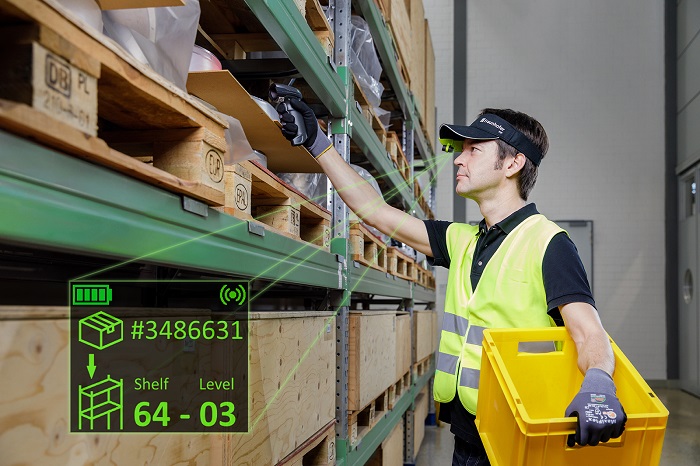By Gina Roos, editor-in-chief
LetinAR , a Korean startup that develops optical solutions for augmented-reality (AR) glasses, and Fraunhofer FEP , a German specialist in OLED microdisplays for wearables, will demonstrate LetinAR’s Pin Mirror (PinMR ) optics lens set with Fraunhofer FEP’s ultra-low-power OLED microdisplay at the Mobile World Congress (MWC), Feb. 25–28, in Barcelona, Spain.
The new optics technology is touted as a higher-performance alternative to traditional optical systems, such as half-mirror, diffractive optical elements, and waveguides, currently used today in smart glasses. Although there are AR wearable solutions being used at logistics companies and car manufacturers, currently available AR glasses lack the critical parameters needed for user-friendliness and ergonomics for long-term use, according to the companies.
Roadblocks to commercialization of AR glasses include form factor, or oversized “boxes” in front of your eyes due to complicated optics elements and displays, a narrow field of view, and short battery lifetime, as well as challenges in color resolution and complicated and expensive production processes, said the companies.
LetinAR said that it has developed a novel optics technology for AR glasses. The PinMR technology applies the “pinhole effect” to tiny mirrors and embeds them with eyeglass lenses. “Human eyes cannot detect the mirrors, which are smaller than pupils,” said LetinAR. “Only the virtual image formed by the light reflected by those mirrors is visible. Users can view the virtual images created via the microdisplay with magnifying ‘see-through’ optics as well as the image from the real world.”

Using the technology, designers can build smart glasses worn like a pair of conventional glasses. The PinMR lens offers a 66% wider virtual screen than the currently available optical systems with more precise color resolution, which gives them an edge over diffraction-based or refraction-based systems, said LetinAR, and it also shows a clear image without causing dizziness because it can extend the depth of field (DOF) multiple times.
For the demo at MWC, LetinAR combines the PinMR with Fraunhofer FEP’s small, lightweight, and ultra-low-power microdisplay for wearables. The system can be integrated into items such as glasses, caps, and helmets. The OLED display delivers sharp images with very high contrast and brightness over a wide dynamic range — monochrome green (20 to 5,000 nits) for now, but it’s expandable to full color, said the company. It also features Bluetooth functionality to enable low power and fast data transmission between devices.
“This fusion of technologies will hopefully soon lead to extremely small, lightweight, and electro-optically efficient devices for data glasses and other wearables, enabling significantly improved battery life and reduced recharge cycles and, thus, always-on capability such as today’s smartphones, which they can wirelessly connect to,” said Dr. Uwe Vogel, division director microdisplays and sensors at Fraunhofer FEP, in a press release .
LetinAR plans to supply the PinMR Lens as a complete module, consisting of the PinMR lens and a microdisplay from external partners. PinMR lens samples will be available to limited customers in late 2019.
Fraunhofer FEP offers three microdisplay variants to developers. These include displays with 304 × 128 pixels with 12-µm² pixel size and 4-bit grayscale, 304 × 256 pixels with 12-µm² pixel size and 4-bit grayscale, and 720 × 256 pixels with 5-µm² pixel size and 1-bit black-and-white image.
Fraunhofer FEP also offers a Bluetooth kit that enables developers to design AR wearables such as a data helmet for emergency personnel or a worker in an Industry 4.0 environment and delivers wireless communications out of the box for various input devices such as smartphones, laptops, and wristbands. The dev kit includes everything needed to test a design, including the optics and graphical user interface for Windows or Android devices.
Advertisement





